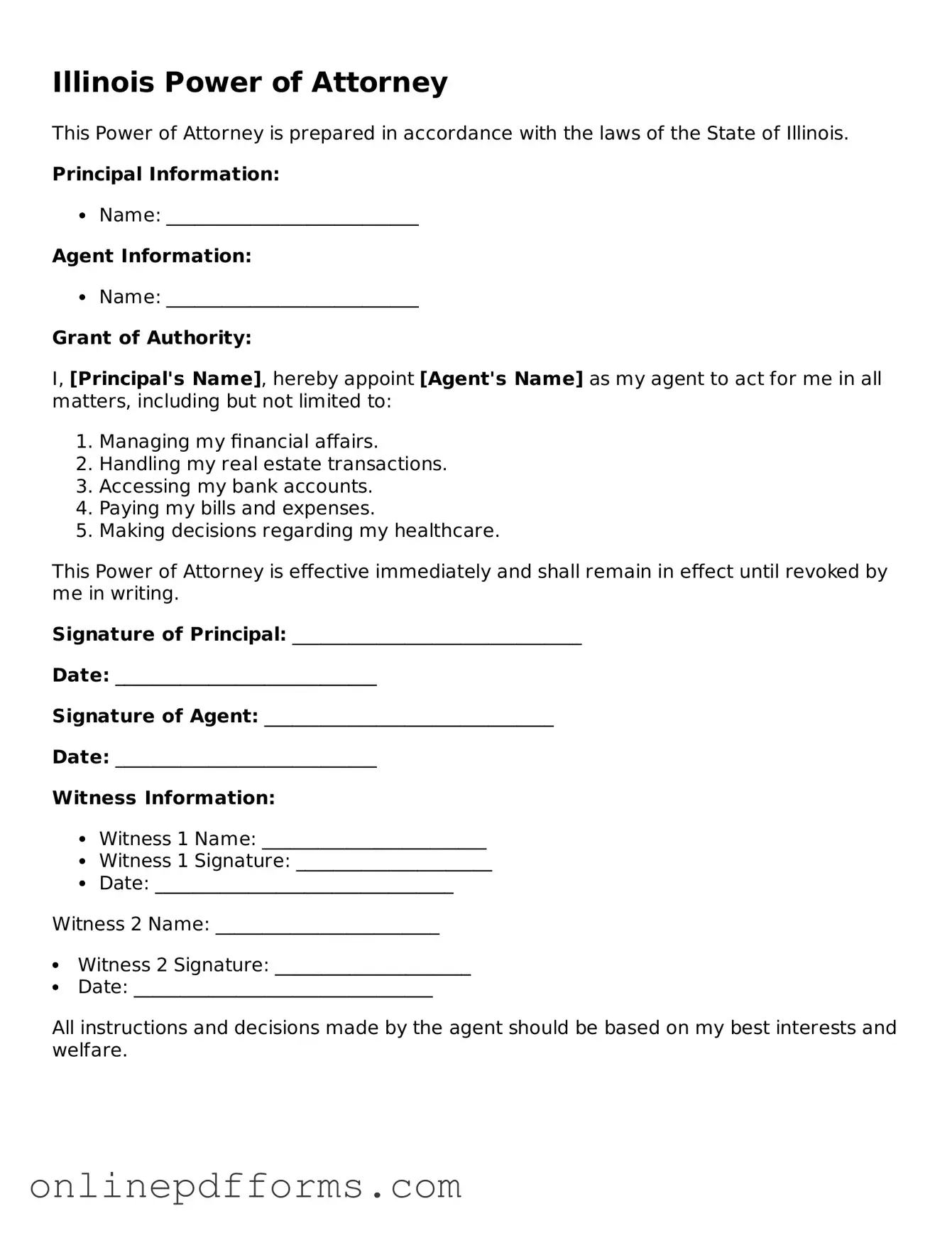The Illinois Power of Attorney form shares similarities with the Medical Power of Attorney, which allows individuals to designate someone to make healthcare decisions on their behalf. Like the Illinois Power of Attorney, the Medical Power of Attorney empowers an agent to act in the best interest of the principal, especially when they are unable to communicate their wishes due to illness or incapacity. Both documents require clear communication of the principal's preferences and values, ensuring that their choices are respected even when they cannot voice them directly.
Another related document is the Durable Power of Attorney. This form provides a broader scope of authority, enabling an agent to manage financial and legal matters for the principal. Similar to the Illinois Power of Attorney, the Durable Power of Attorney remains effective even if the principal becomes incapacitated. This ensures continuity in managing the principal’s affairs, allowing the appointed agent to step in seamlessly during challenging times.
The Living Will is another document that aligns closely with the Illinois Power of Attorney. While the Power of Attorney designates someone to make decisions, the Living Will outlines specific preferences regarding medical treatment and end-of-life care. Both documents work together to provide clarity and guidance, ensuring that the principal’s wishes are honored in situations where they cannot express their desires. This combination offers a comprehensive approach to healthcare planning.
Additionally, the Guardianship Agreement bears resemblance to the Illinois Power of Attorney. This document is used when an individual is unable to make decisions due to incapacity, and it designates a guardian to make those choices. While the Power of Attorney allows for a more flexible and often less formal arrangement, the Guardianship Agreement typically requires court approval. Both documents aim to protect the interests of individuals who may not be able to advocate for themselves.
Lastly, the Trust Agreement also shares similarities with the Illinois Power of Attorney. A Trust allows individuals to manage their assets during their lifetime and specify how those assets should be distributed after their passing. Like the Power of Attorney, a Trust provides a mechanism for someone to act on behalf of the principal, ensuring that their financial and personal wishes are honored. Both documents emphasize the importance of planning for the future and securing one’s legacy.
